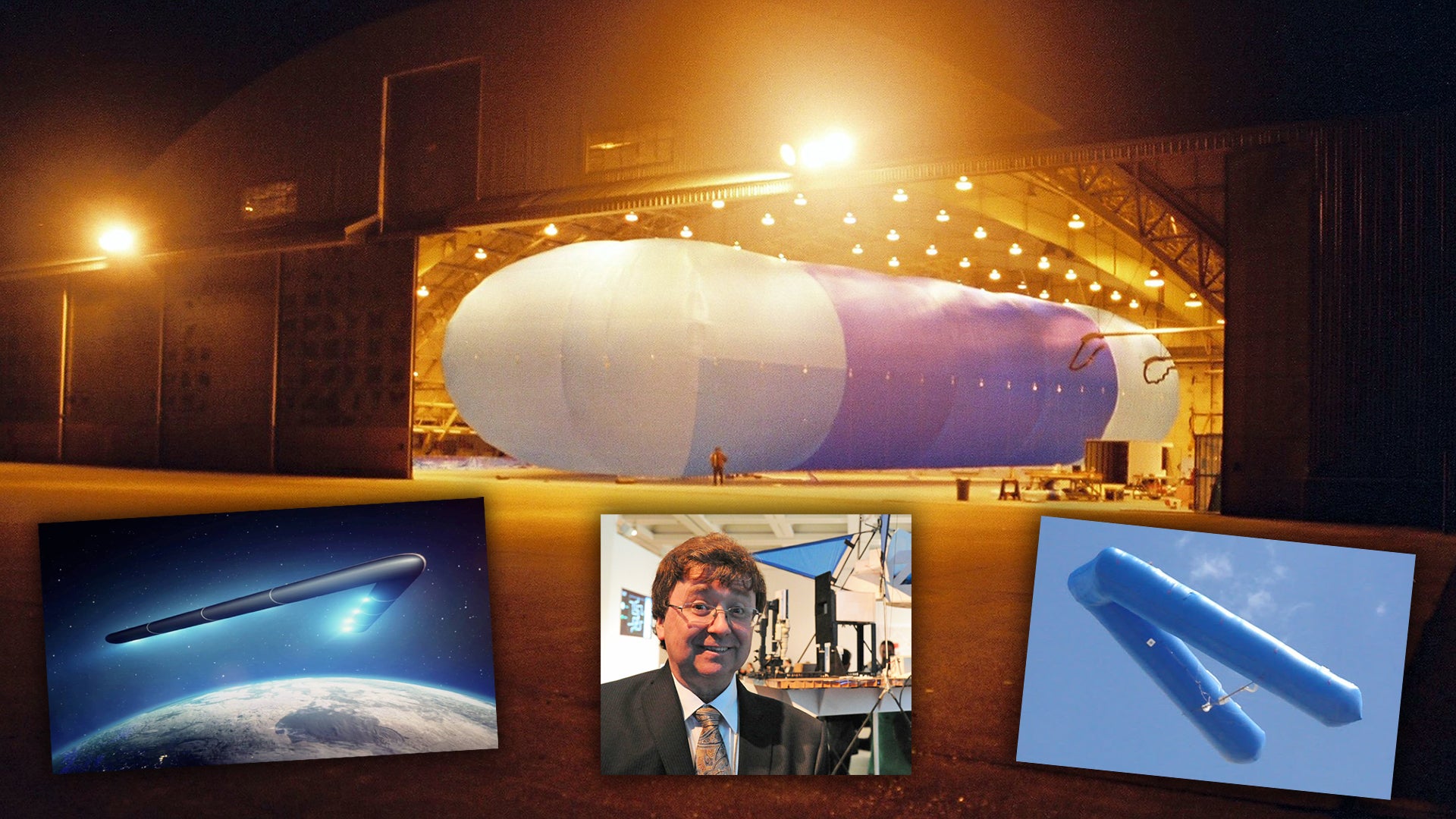Space is clearly the final frontier for the American armed forces, as made clear by the recent creation of the U.S. Space Force. The establishment of the newest branch of the United States’ military has been controversial, as have several seemingly bizarre statements about the shadowy space fighting capabilities of America and its adversaries. Despite the controversy, it is undeniable that the space domain will play an increasingly important role in the militaries and economies of the 21st century.
For that reason, revolutionary spaceflight startups, such as SpaceX, and more established companies, such as Boeing and Lockheed Martin, are working to expand access to rocket-based spaceflight and even reusable launch vehicles. While these high-profile companies tend to get most of the press with spectacular launches, and in SpaceX’s case, spectacular landings, there is another revolutionary aerospace company, JP Aerospace (JPA), that has for years been exploring a potentially simpler, cheaper, and safer way to reach outer space via orbital airships.
The War Zone recently spoke with JP Aerospace’s founder John Powell to discuss the company’s huge sci-fi looking craft, as well as the promise of using lighter-than-air craft to put spacecraft in orbit, the possibility of even building floating “cities on the edge of space,” and more.
Why Airships?
John Powell founded JP Aerospace in the late 1970s in order to develop new, more affordable methods of reaching space using lighter-than-air vehicles. Over the years, the company has developed a wide range of balloons and inflatable vehicles that can reach extreme altitudes to accomplish various objectives. The firm also partners extensively with educational institutions to allow students to create tiny ping pong ball-sized satellites called PongSats, which are flown aboard JPA craft. Eventually, the company aims to develop a whole new infrastructure to allow routine, safe, and efficient V-shaped lighter-than-air craft to float slowly up to space.
In his 2008 book Floating to Space: The Airship to Orbit Program, Powell writes that much of the world’s current spaceflight technology is still based on the missile technology of the Cold War-era Space Race when money was no issue and the dangers of launching rockets were accepted as inevitable. As such, Powell says that current spaceflight technology worldwide is “too expensive, too dangerous, takes an army to ready, carries too little, and will never open up the space frontier,” adding:
Current NASA estimates call for ten years and ten billion dollars to create a craft that is smaller and less capable than the existing space shuttle. The Russian space program is hampered by huge economic problems. The Chinese are now joining the space community; however they are decades behind. All these efforts are only improvements on the existing technology, large rockets fired into space. The focus is on lighter materials, more efficient engines, and better electronics. This is fine-tuning. Fine-tuning does not create dramatic change.
To truly create a new spaceflight paradigm, Powell writes in the book, we need a way to reach space that is far less expensive and doesn’t require the massive infrastructure needed to launch what are still essentially ballistic missiles. That’s precisely where airships come in to play.
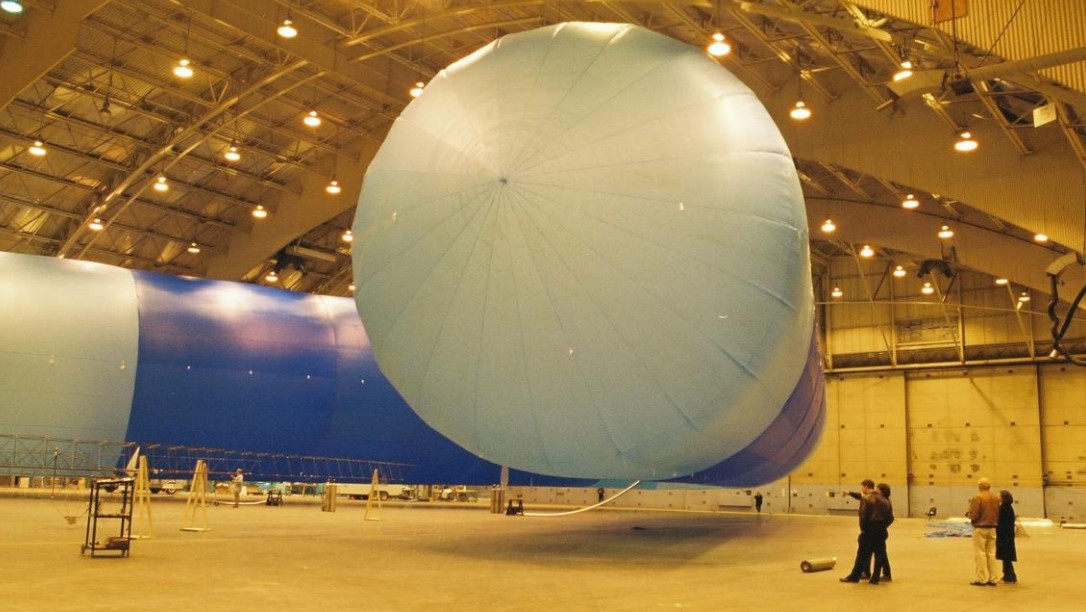
Powell told The War Zone that the main advantage lighter-than-air craft can offer is the massive reduction in the size and weight needed for a vehicle to reach space, saying:
The higher you start from, the smaller your rocket needs to be. Think of Virgin Galactic’s Spaceship Two, or the Pegasus orbital launch vehicle. They both get a huge advantage by launching from an aircraft. Think of an orbital airship as an air-launch, but instead of firing the rocket at a mere 50,000 feet it does it at over 200,000 feet.
Aside from the reductions in rocket size and fuel volume, Powell adds that airship-launched spacecraft are also made much safer and efficient by carrying less fuel, explaining:
The largest danger of space flight is the high rate of energy release. You put six astronauts on the largest tank of liquid explosives on the planet then light it on fire. Six minutes later they’re in space. Would you want to fly to New York that way? A 747 doesn’t burn all its fuel in a few moments and hurl the passengers across the sky, it burns it slowly over the course of the entire trip. It can do this because the aircraft is supported by the air with its wings.
The thin atmosphere at the edge of space supports the airship while it accelerates over days to reach orbital speed. It is both a buoyant craft and a flying wing.
Instead of the current ‘oh no, an engine failed, everyone dies’ scenario, you have an ‘oh no, an engine failed, somebody go back and work on it, have a meeting, if we can’t fix it in a few hours we’ll need to go home’ scenario. Airships to orbit can change the very nature of space travel.
To change the nature of space travel, Powell and JPA have put together what they call the Airship to Orbit program.
The Airship To Orbit Program
JP Aerospace’s plan for the Airship to Orbit program consists of three stages. During the first stage, a gigantic V-shaped airship like the JP Aerospace Ascender rises from the Earth’s surface to an altitude of around 140,000 feet.

There, the Ascender airship would dock with a space station resembling a starfish known as a Dark Sky Station. JP Aerospace envisions Dark Sky Stations with arms 2 miles in length which would serve “not only as a port for the orbital airship but also as a research center, construction site, and tourist destination.” JPA calls these conceptual stations “cities at the edge of space” and the Dark Sky Station Block Four JPA envisions would house 35 crew members and have room for 70 passengers.
Powell told The War Zone that JP Aerospace has already conducted flights of small scale Dark Sky Station platforms. Already, some of JPA’s flights have broken world altitude records he said, adding:
In fact, there is only one airship ever to reach those altitudes, that is our Tandem airship which flew to 95,085 feet in 2011. The only other airship that has gotten close was the Southwest Research institutes ‘HiSentinel’ airship [which] flew to 74,000 feet in 2005, but failed moments after reaching that altitude and was never found. There have been subsequent HiSentinels that have flown to lower altitudes. We also flew a ½ scale Tandem airship to 80,000 feet in 2010.
The third phase of the planned ATO program would launch directly from the Dark Sky Station. A V-shaped orbital airship up to 2,000 feet in length would exit from the upper atmospheric station and fly to orbit using both buoyant lift and hybrid chemical/electric propulsion. These orbital vehicles JP Aerospace envisions would be too large and light to fly in the lower atmosphere and would have to be assembled at the Dark Sky Station where atmospheric pressures are much lower.

Thanks to orbital acceleration, this final airship would become hypersonic, reaching speeds of up to 17,500 miles per hour (close to Mach 23) as it rides its own shockwaves through the upper atmosphere. As early as the 1960s, NASA was flying V-shaped lighter-than-air reentry vehicles at speeds as high as Mach 7 at 96 miles above the Earth’s surface, so there is at least a technical precedent for hypersonic inflatable aircraft at extreme altitudes.
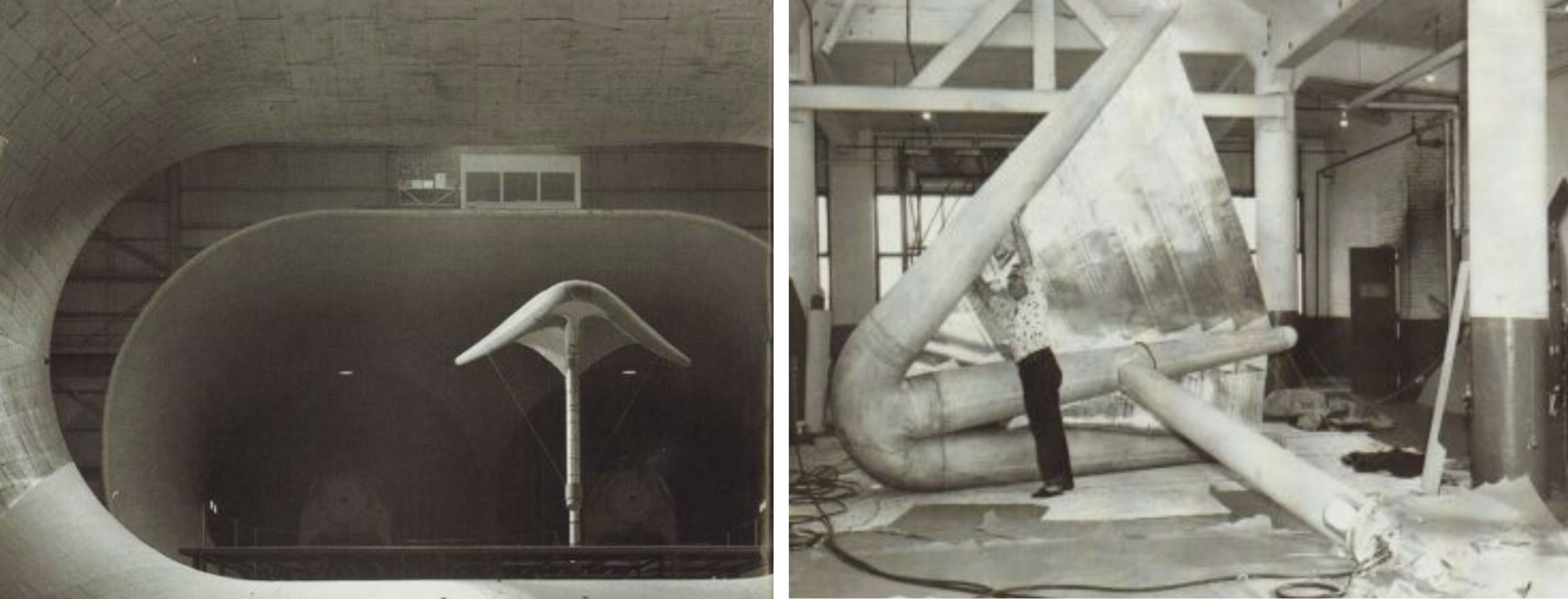
The ultimate goal of JP Aerospace’s ATO program is to create the infrastructure for manned Earth-to-orbit travel, which consists of the three stages in the ATO program. Introducing flight crews obviously also introduces a whole new level of complexity and risk to the ATO program, and so far JP Aerospace has not conducted any manned high-altitude flights. In fact, Powell says that there are no manned airships currently flying in the near space-environment.
However, JP Aerospace is currently working on a manned submarine in order to test the pressurization and life support systems that would be necessary aboard a manned airship or Dark Sky Station operating at near-space altitudes.
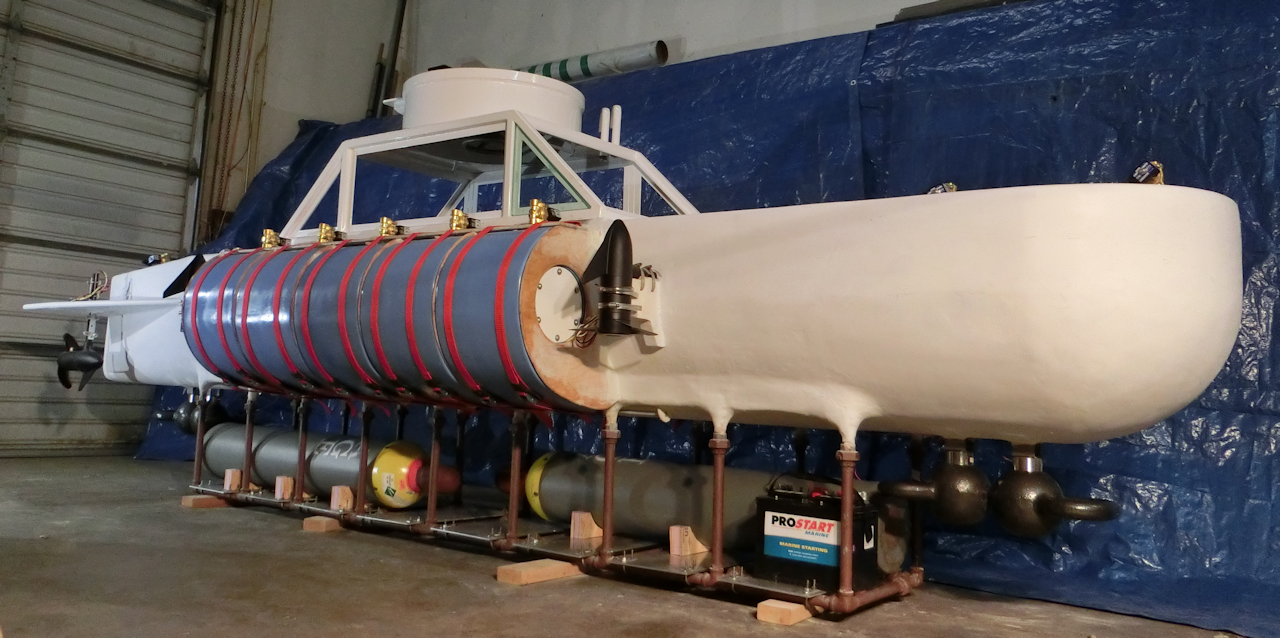
Obviously, as Powell notes in his book Floating to Space, to construct the world’s largest aircraft ever conceived will not be an easy task. Powell writes that the construction of these orbital airships “not only requires many new technologies, but also requires them to work together.” Components and entire systems will have to be designed largely from scratch.
Still, Powell claims in Floating to Space that “impossible” simply means no one has done it before. “Look closely at something that was done that was proven to be impossible,” Powell writes, “very often the key reason it was considered impossible still exists. The problem was overcome in an unexpected way.”
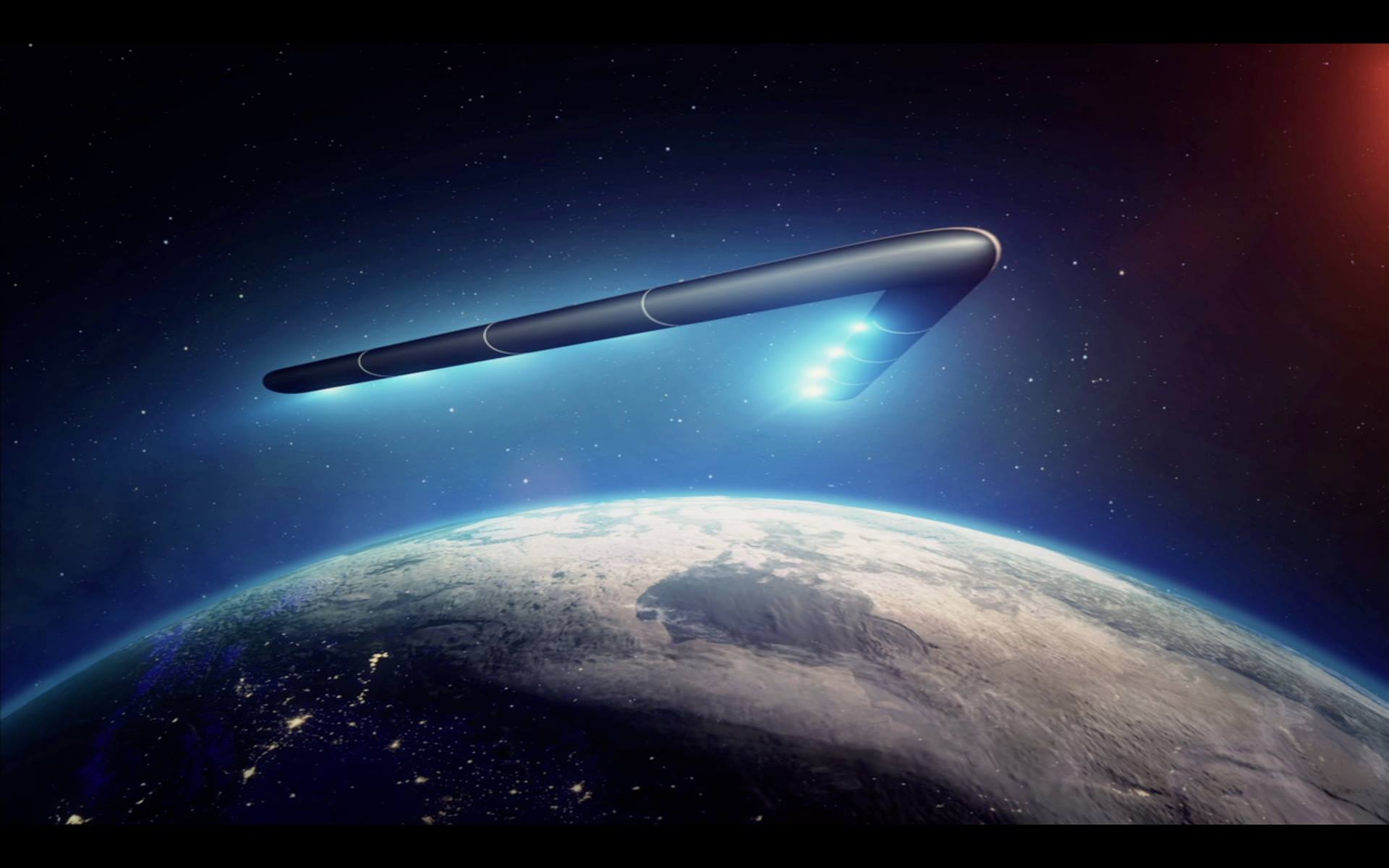
Barriers Left To Cross
JP Aerospace has flown hundreds of missions, but serious technical challenges still stand in the way of the company or any other aerospace firm developing fully operational orbital airships or lighter-than-air space stations. According to Powell, while the development of the ATO program is still many years away from its first flight of a 2,000-foot orbital airship, many of the concepts required for such a ship have already been tested either by JPA or by other laboratories, explaining:
The number one question is: Can a little group like JP Aerospace tackle such a huge and complex project? Answer: I have no idea, but so far so good.
Serious challenges include active drag reduction: Even at the edge of space the aerodynamic drag on the vehicle is considerable. Active drag reduction, using electrical power to reduce drag, has been around for decades. However, only in national labs. We need to take this technology and put it in the real world.
Balloons and other inflatables have been flown to Mach 10 in the upper atmosphere. The question is: can they be flown to Mach 24?
Another major undertaking is the sheer size of the vehicles. The orbital airship needs to be 6,000 feet long to be buoyant enough and have enough wing area to support it at the altitude where it will conduct its orbital insertion burn at 300,000 feet. The vehicle will need to be built (at least inflated) at the Dark Sky Station. No one has ever built anything in the sky before.
There are major technical problems with a high altitude platform like the Dark Sky Station. The arms of the Dark Sky Station will be two miles across. All current long-duration balloons utilize advanced multi-layer materials to survive in the upper atmosphere to long durations. The Dark Sky Station will employ lower-tech films and replace them in flight when they deteriorate. This way we change the long duration issue from an exotic technology problem to a maintenance problem. We have accomplished high altitude gas moving and balloon swapping on our research flights.
“Big Black Triangles”
Many of the images of JP Aerospace vehicles both prototype and in development may look familiar to those aware of incidents of alleged unidentified aircraft over the last few decades. As an aside to our interview with JP Aerospace’s John Powell, we asked Powell how possible he feels it could be, based on his experience, that the USAF or another military/governmental body may be operating “black” or off-the-books lighter-than-air craft which might explain some of these reported sightings.

There have been numerous claims made in recent years surrounding alleged secret military airships, encouraged by popular lore and high-profile incidents. After all, there is some precedent for such craft, such as the Silent Joe stealth blimps from the 1960s or the Northrop Grumman LEMV from the past decade. Despite there being no conclusive evidence that such airships exist, there have been plenty of unconfirmed and anecdotal reports that point to this being the case.
In the early 1980s, scores of eyewitnesses claimed to have seen massive, slow-moving V-shaped aircraft floating silently through the night skies above the Hudson Valley in New York state. In the 1997 “Phoenix Lights” incident, thousands of witnesses throughout Arizona, Nevada, and northern Mexico reported seeing a similarly massive and silent aircraft. Accounts vary, and some claim that there were two separate sets of lights conflated as one incident, but most eyewitnesses reported seeing a giant, silent craft that was either v-shaped or triangular passing low over the region.
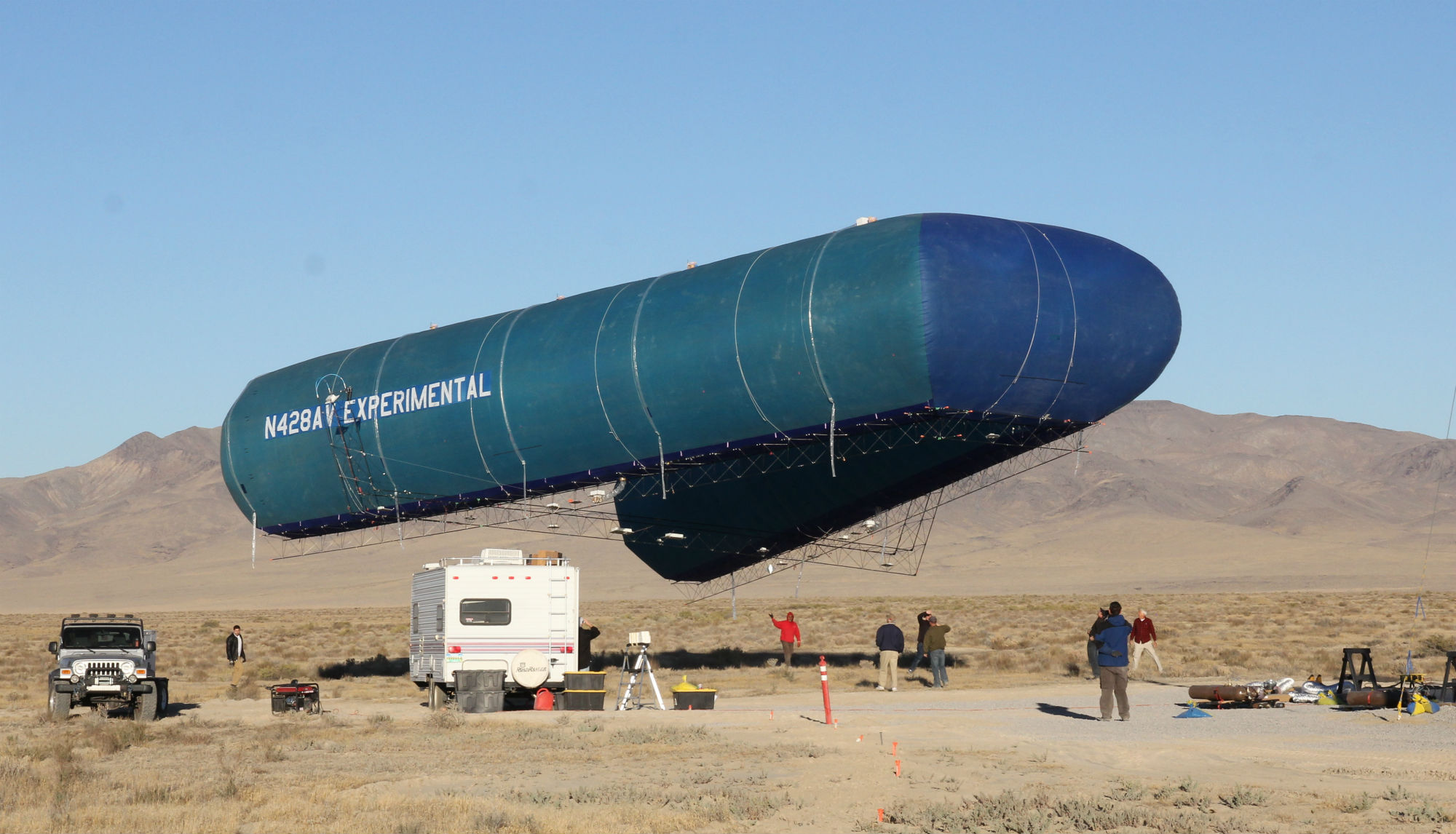
Arizona’s governor at the time, Fyfe Symington, even witnessed the incident and later told reporters that despite the fact that the USAF later identified one of the groups of lights seen during the incident as flares dropped by A-10 Warthogs during training exercises at the Barry Goldwater Range, he believes he saw something else entirely:
I witnessed a massive delta-shaped craft silently navigate over Squaw Peak, a mountain range in Phoenix, Arizona. It was truly breathtaking. I was absolutely stunned because I was turning to the west looking for the distant Phoenix Lights.
To my astonishment this apparition appeared; this dramatically large, very distinctive leading edge with some enormous lights was traveling through the Arizona sky.
As a pilot and a former Air Force Officer, I can definitively say that this craft did not resemble any man-made object I’d ever seen. And it was certainly not high-altitude flares because flares don’t fly in formation.
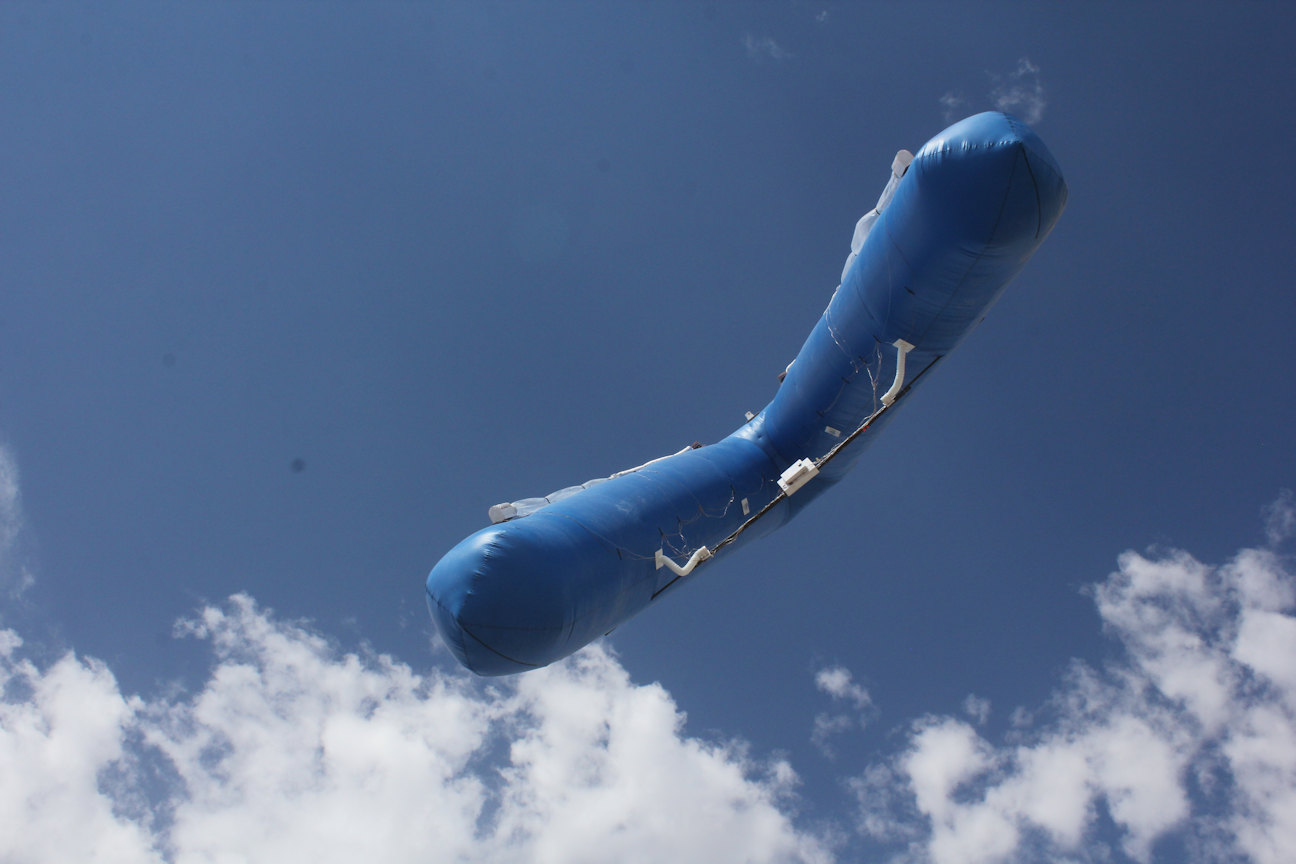
JP Aerospace’s John Powell says that while his company has designed vehicles for the Department of Defense, some of which went on to the ‘black’ world, his company was ultimately not responsible for the Phoenix Lights incident:
Here I must tread a little delicately. We have built several airships and other vehicles for various DOD agencies. None of our programs were classified. However, after completion and delivery, our vehicles entered into programs of which I have no knowledge.
We were testing vehicles at the time of the Phoenix lights incident, however, I can absolutely say that JPA was not, nor [was] our equipment, involved.
There have been times where our vehicles have been sighted and confused for UFOs or other mysterious things. I have also seen images of great vee-shaped objects in the sky that I can say for sure were not mine, but I could note perhaps the tech of a competitor. This is all speculation.
The only public record of a JP Aerospace airship built for the DoD was a 175-foot Near-Space Maneuvering Vehicle (NSMV) that JPA developed for the Air Force’s now-defunct Space Battlelab and Space Warfare Center at Schriever Air Force Base, Colorado.
A 2005 RAND Corporation technical report prepared for the US Army titled “High-Altitude Airships for the Future Force Army” states that the NSMV built for the Air Force was to be tested at Fort Stockton, Texas in June 2004. During the test, the NSMV was scheduled to climb to 100,000 feet and loiter for five days, navigate by remote control, maintain a static position for a short time, and then return to Earth. At that altitude, the NSMV would have had a 230-mile surveillance radius, according to official documents. Line-of-sight at that altitude is roughly 380 miles in any direction.

Unfortunately, a DoD document from 2012 states that the test flights of the NSMV that JP Aerospace built for the Air Force Space Battlelab were canceled due to issues with the craft’s propulsion system and failed launches. In Floating to Space, John Powell writes that the 175-foot Ascender built for the NSMV project was destroyed “during a high wind accident while being prepared for its first flight.” The Air Force terminated the program in 2005.
A Possible Future For Space Travel
While lighter-than-air craft don’t get the attention that traditional high-performance aircraft do, they nonetheless remain a vital subject of aerospace research within the Department of Defense, according to a 2012 report prepared by the Rapid Reaction Technology Office, part of the Office of the Assistant Secretary of Defense for Research and Engineering. The report discussed airship technologies that the Department of Defense’s laboratories and contractors were developing or had developed at the time that “enable viable lighter-than-air vehicles to contribute to our short, mid, and long term strategy for national security and defense” and offered “advanced intelligence, surveillance, reconnaissance, and communications capabilities through integrated sensor payloads and on-board processing for real-time intelligence and post-mission forensics.”
The report also noted that “advances and investment in aerostat and airship technology are also being made in the private sector” and that “the DoD is monitoring this progress and will continue to look for opportunities to advance our objectives through commercially available technology.” In addition to JP Aerospace, the report discussed recent airship platforms designed and constructed by the U.S. Air Force, U.S. Navy, U.S. Army, the Defense Research Projects Agency (DARPA), NASA, Lockheed Martin, Raytheon, and other aerospace contractors.
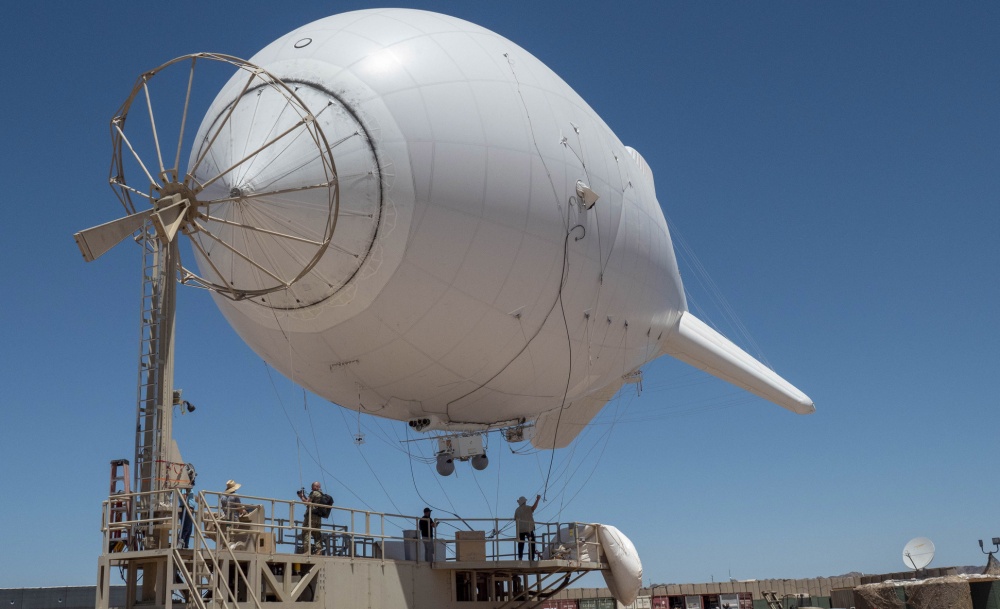
A 2013 report that the Rapid Reaction Technology Office prepared added that “as the U.S. engaged in conflicts where airspace was less contested, such as Iraq and Afghanistan, interest increased in the development and use of LTA [lighter than air] vehicles for multiple purposes.” Forward operating bases and small tactical units used tethered aerostats for persistent intelligence, surveillance, and reconnaissance (ISR) during Operation Iraqi Freedom and Operation Enduring Freedom, demonstrating the fact that airships and aerostats still have a use on the battlefield, especially low altitude ones. America’s potential foes have followed suit in recent years.
While the Department of Defense still employs lighter-than-air vehicles primarily for ISR missions, many DoD laboratories are working towards developing hybrid airships for logistic airlift missions. As the armed forces continue their pivot towards space, companies like JP Aerospace that are willing to explore the possibilities of lighter-than-air spaceflight and find new paradigms will be increasingly important.
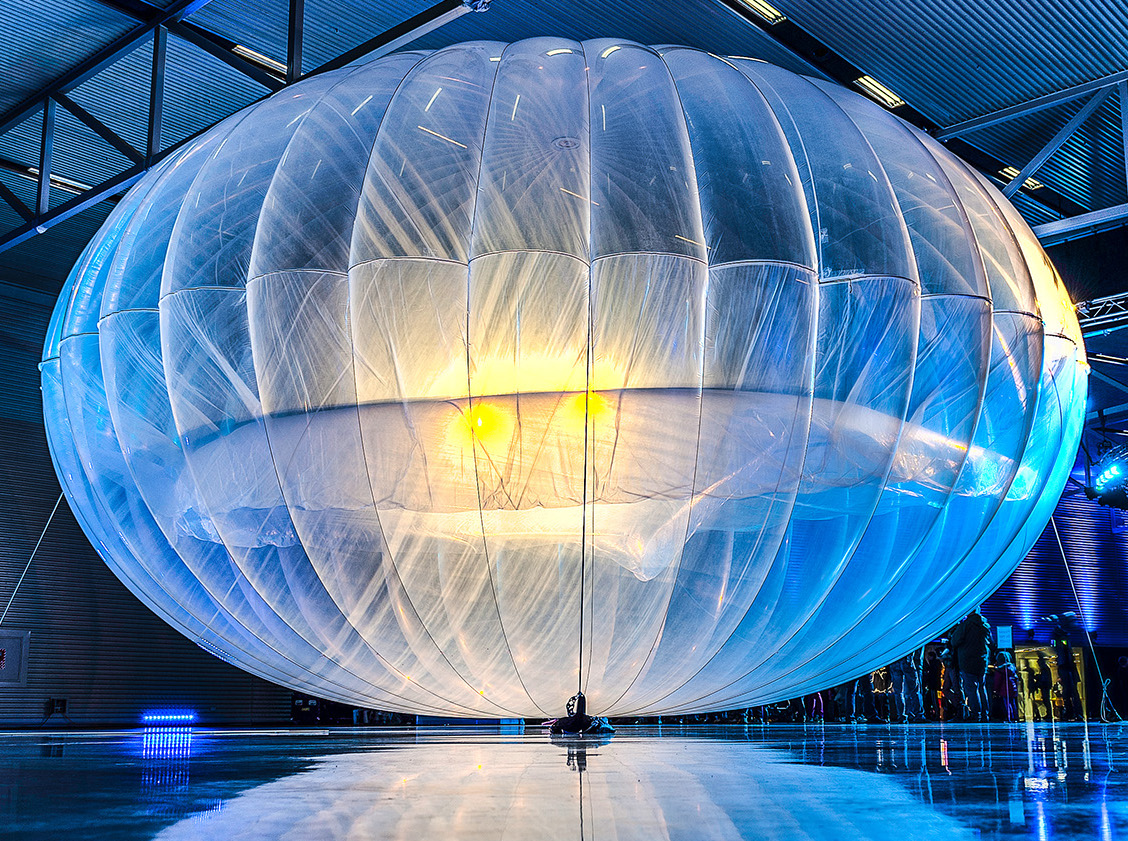
There is also great potential for replacing or augmenting communications satellite networks with LTA craft. This could be a key area of research and development for the DoD as space becomes increasingly contested and new issues arise such as orbital pollution. There is already precedent in the commercial sector for such LTA-based communication networks, such as the Loon project launched by Google’s parent company Alphabet, Inc. Loon uses high-altitude balloons flying up to 11 miles up in the stratosphere to provide wireless broadband internet to those on the surface below.
With all this in mind, lighter-than-air flight is undergoing something of a modern renaissance, but the leap from more terrestrial uses to taking payloads into space certainly signifies the apex of imagination when it comes to what is the oldest form of non-organic flight. We can only hope that JP Aerospace continues to push the boundaries of airship-to-orbit technology so that maybe one day we all may be able to float to orbital space stations aboard massive V-shaped airships.
Contact the editor: Tyler@thedrive.com
